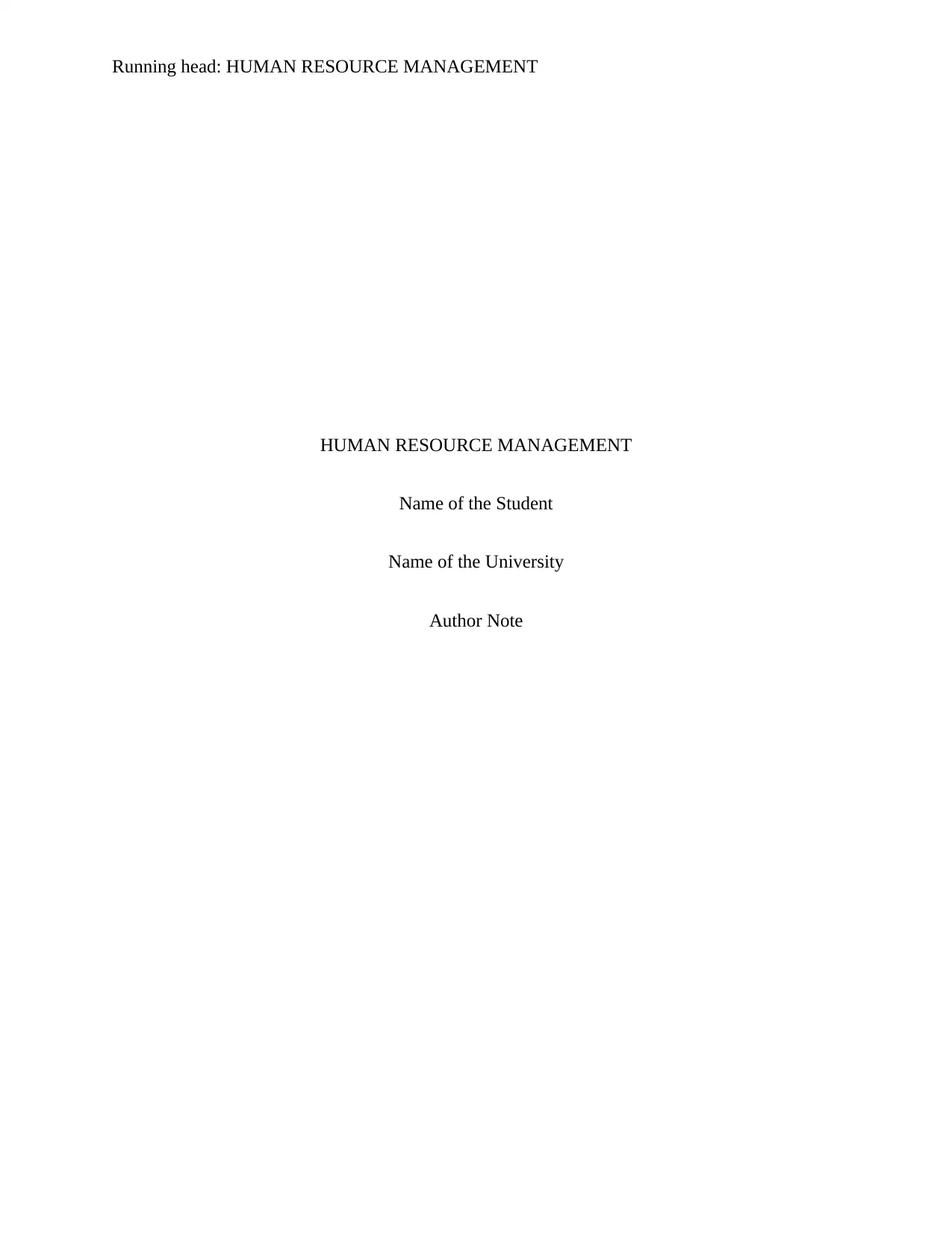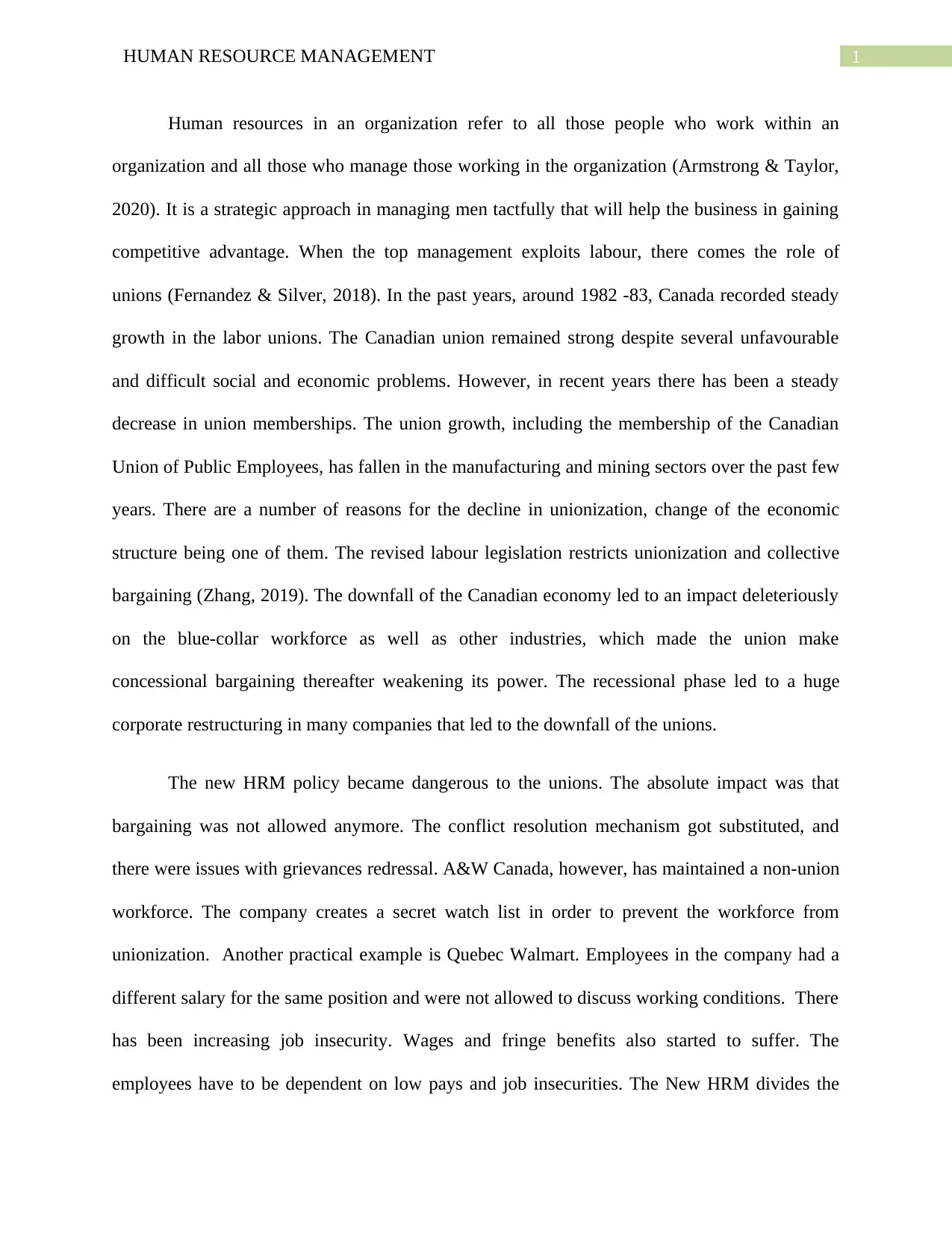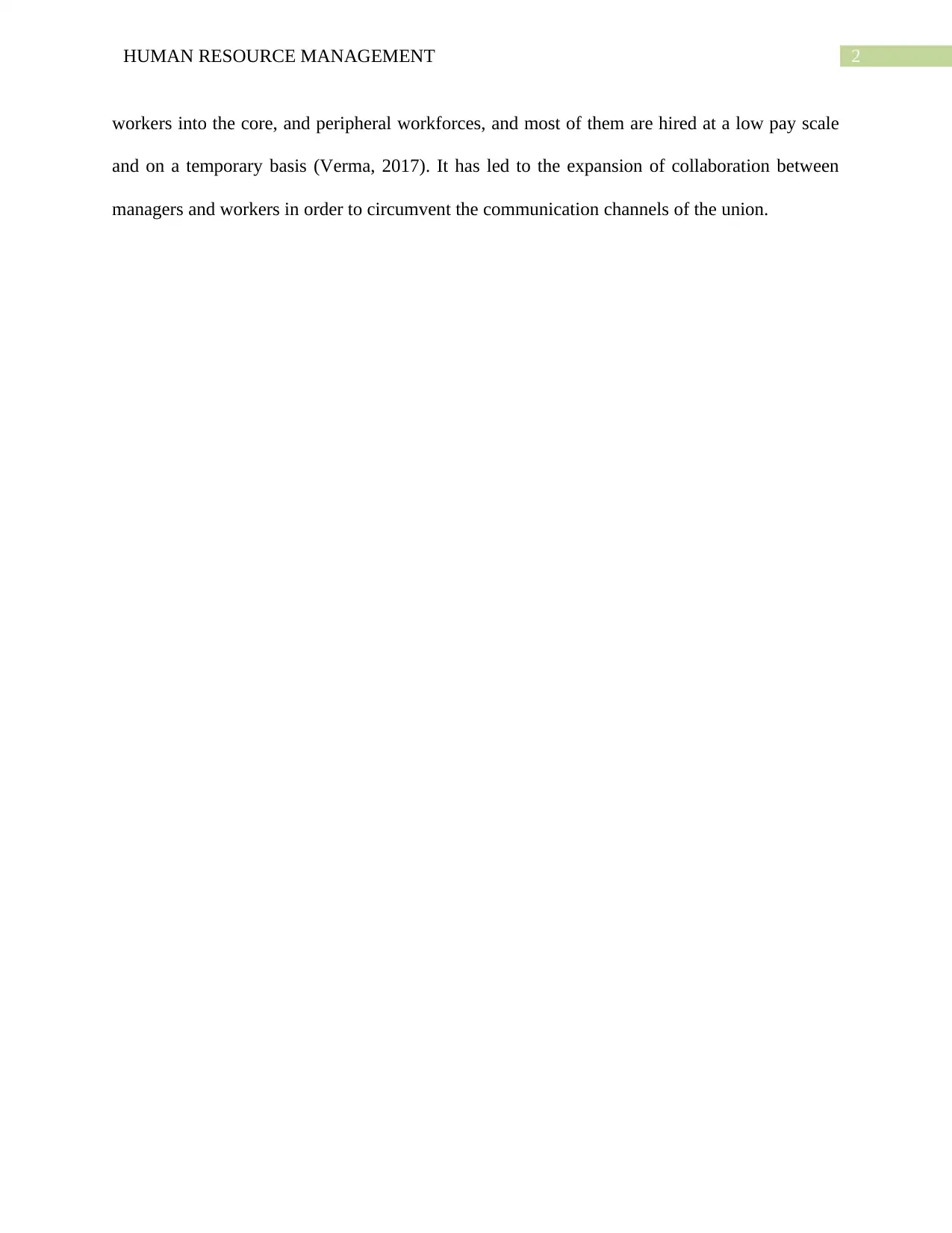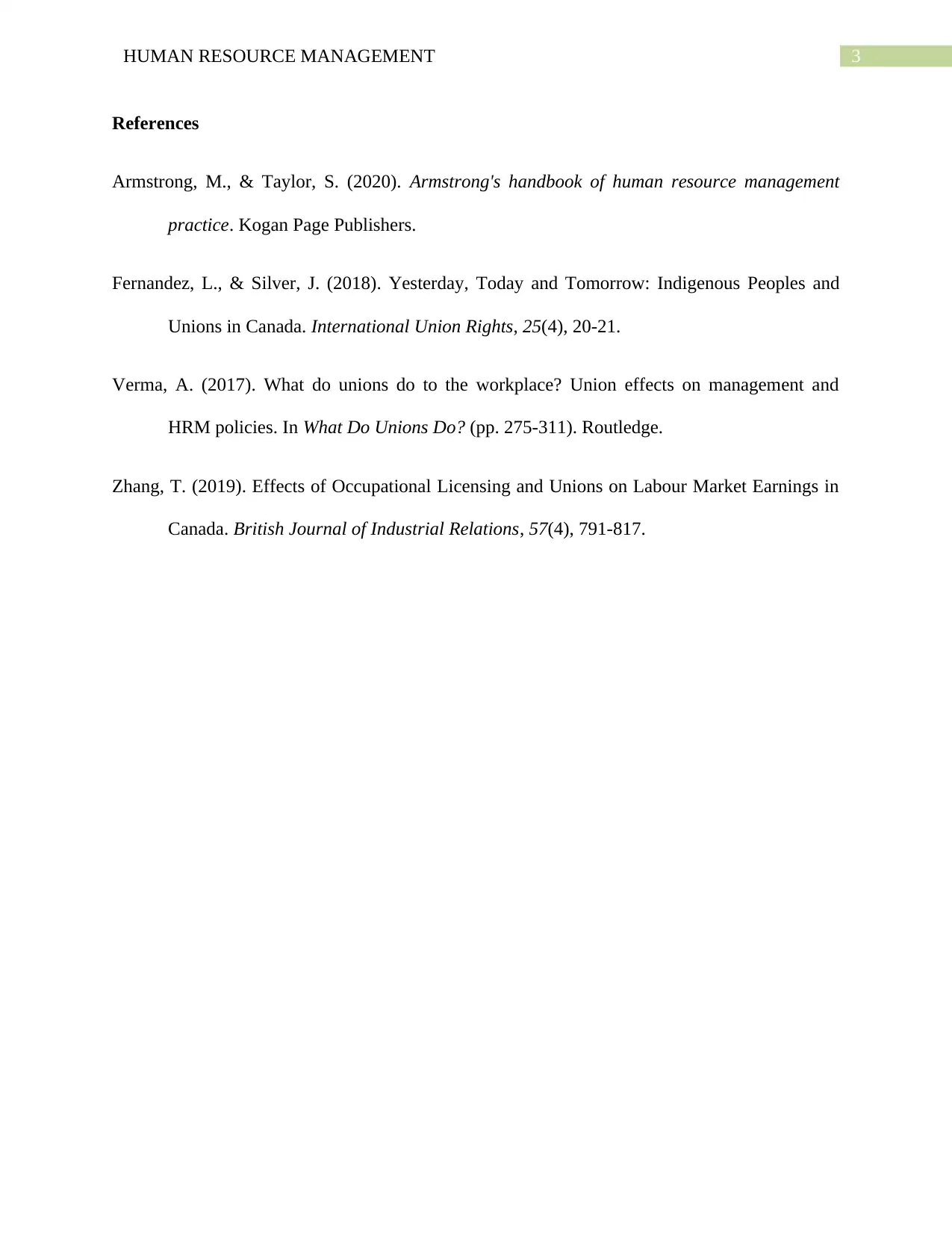Human Resource Management Report: Canadian Union Analysis and Impact
VerifiedAdded on 2022/08/22
|4
|583
|17
Report
AI Summary
This report delves into the intricacies of Human Resource Management (HRM) in the context of Canadian unions. It explores the historical trends, economic shifts, and legislative changes that have impacted union membership, including the decline in unionization. The report examines the role of HRM policies and their influence on the workforce, especially in the context of A&W Canada and Quebec Walmart. Furthermore, it discusses the consequences of the decline in unionization, such as job insecurity, wage stagnation, and the rise of precarious employment. The analysis includes references to the shift in the labour market and how it has affected the relationship between workers and management. The report also examines the shift to new HRM policies and its impact on the union's influence.
1 out of 4





![[object Object]](/_next/static/media/star-bottom.7253800d.svg)